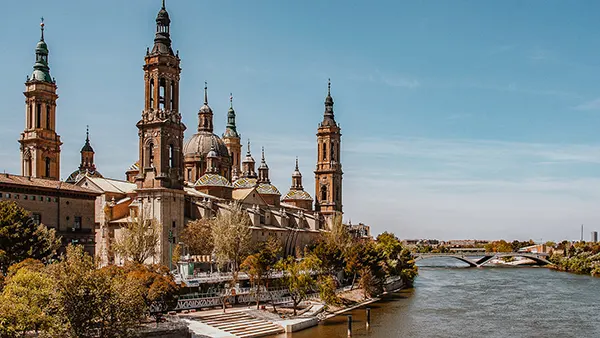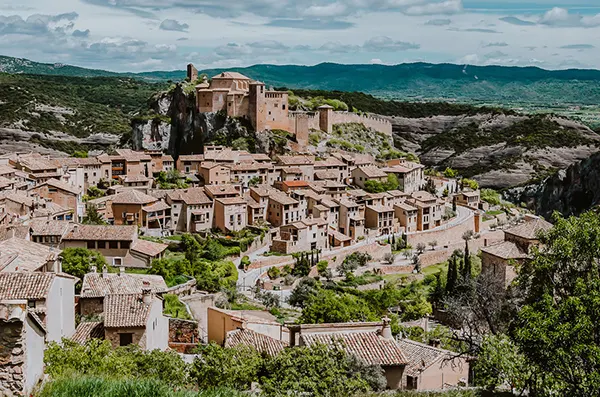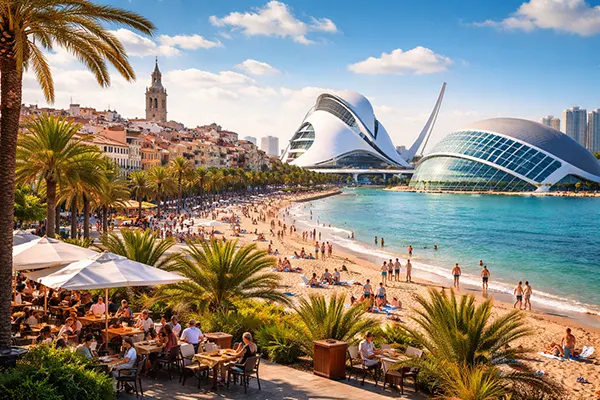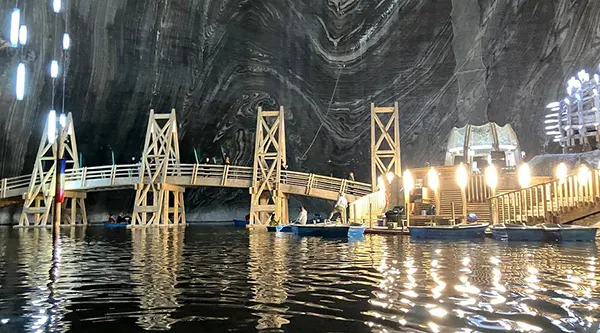
Garnacha, Spain – A Small Village with a Wine Soul in Aragon
In the heart of Aragon, away from the noisy cities and mainstream tourist trails, lies Garnacha – a tranquil Spanish village synonymous with winemaking traditions and a centuries-old agricultural heritage. This small yet historically rich settlement embodies the essence of rural Spain, with its peaceful vineyards, local customs, and breathtaking natural surroundings.
The Cultural Significance of Garnacha in Aragon
Garnacha is more than a geographical name – it represents an entire cultural layer deeply rooted in Aragon’s identity. The village stands within the area known as the “Ruta de la Garnacha,” a regional wine route that connects historical towns and vineyards producing the famed Grenache grape. This grape variety, locally known as “Garnacha,” has shaped not only the local economy but also social customs and annual traditions.
The people of Garnacha take pride in their heritage. Annual festivals dedicated to the grape harvest attract visitors from nearby regions. Traditional music, regional cuisine, and folkloric dances blend seamlessly with the rituals of winemaking, offering an authentic experience to all who attend.
Local authorities and winemakers have worked together to preserve this identity. Through educational programmes, guided tours, and support for ecological farming, Garnacha has become a benchmark for sustainable viticulture and cultural conservation in rural Spain.
The Role of Wine in Daily Life
Wine is not simply a product in Garnacha – it is a cornerstone of daily life. Local families often own small vineyards passed down through generations. Many of these operate on a cooperative basis, ensuring fair practices and shared knowledge across producers. These vineyards are not massive industrial fields but intimate, lovingly tended lands that produce wines with personality and story.
Wines from Garnacha are typically bold and fruity, expressing the mineral character of the Aragonese soil and the resilience of the region’s sun-drenched climate. Cellars and wine caves are often located in traditional stone buildings, where residents gather not just to drink but to talk, share news, and maintain social cohesion.
The rise of enotourism has further connected Garnacha to the wider world. Wine lovers from across Europe now travel to this small village not just for tastings, but to learn about old pruning methods, grape selection, and cellar ageing – skills that are still passed down orally, like folklore.
Natural Beauty and the Landscape of Garnacha
The village of Garnacha is surrounded by rolling vineyards, olive groves, and low mountain ranges that form part of the Iberian System. These landscapes are not only scenic but ecologically important, offering a habitat for native species of birds, wild herbs, and rare insects. Walking trails and cycling paths attract eco-tourists who appreciate silence, biodiversity, and authentic experiences.
Nature reserves around the village help protect rare flora and fauna. The climate here is typically Mediterranean with continental influences – long dry summers and cold winters that help vineyards thrive and maintain soil health. This equilibrium between nature and cultivation is one of the region’s key strengths.
Small stone cottages, dry-stone walls, and ancient irrigation systems add to the charm. Local agriculture is deeply interwoven with traditional environmental knowledge, including lunar planting cycles and natural pest control. Garnacha thus exemplifies a rural lifestyle that respects and responds to the rhythms of nature.
Outdoor Activities for Visitors
For those seeking rural adventure, Garnacha offers more than just wine. There are marked hiking trails that follow the old trade paths used for transporting grapes and olive oil. These routes wind through forests and hills, offering scenic views of the vineyards and access to historical ruins and medieval towers.
Birdwatchers can observe species like the griffon vulture, while botanists admire the unique Mediterranean flora. Horseback riding and cycling tours are popular among families and eco-tourists. All activities are supported by local guides, ensuring that tourism remains small-scale and respectful of local traditions.
Additionally, several agrotourism spots have opened in recent years, offering accommodation in restored stone houses. These provide insight into the daily life of villagers and allow guests to participate in cooking, harvesting, or even grape stomping depending on the season.

Economic Revival through Wine Tourism
Over the past decade, Garnacha has become a model of economic resilience through sustainable wine tourism. With urban migration affecting many rural areas in Spain, Garnacha has maintained a stable population thanks to the influx of tourists, wine enthusiasts, and cultural heritage supporters.
Small producers have united under a quality seal that guarantees authentic production methods and traceability. This label, recognised within the Denominación de Origen Protegida (DOP) framework, has helped the wines of Garnacha reach international markets while retaining their traditional character.
Workshops, harvest events, and local fairs have brought additional income to families and preserved endangered crafts like barrel-making and natural fermentation. The economy now thrives on a careful balance between tourism, farming, and community-based business models.
Challenges and Sustainable Solutions
Despite its successes, Garnacha faces ongoing challenges such as water scarcity, climate unpredictability, and market competition. Droughts in recent years have prompted villages to invest in water-saving technologies and organic mulch strategies to preserve soil moisture and vine health.
Young residents are increasingly returning to the village to work in wine production and tourism. Programmes co-funded by local government and EU rural development grants have supported education and job creation in sustainable sectors. These include courses in biodynamic farming and eco-certification for winemakers.
Garnacha continues to navigate the future by blending tradition with innovation. Its ability to remain rooted in the past while embracing modern ecological practices makes it a compelling example of rural revival in 21st-century Spain.




